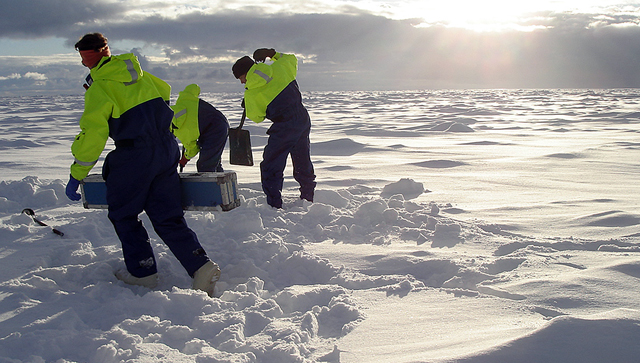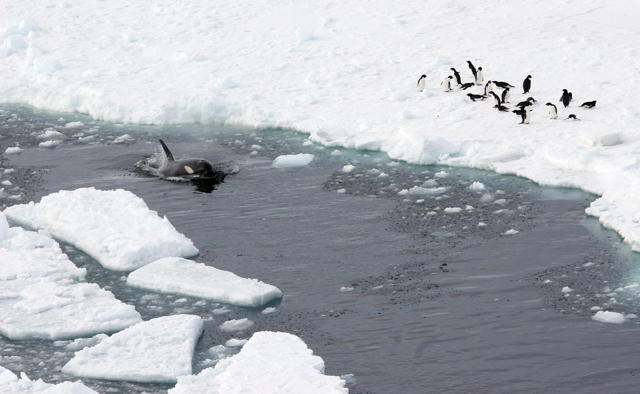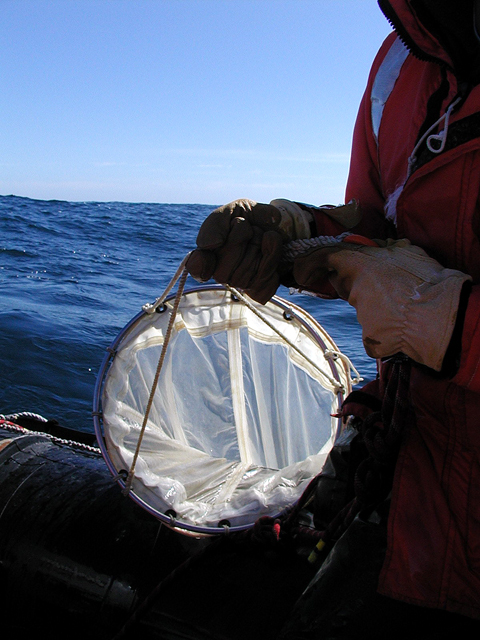Polar pollutantsDDT, pesticides that enter food web offer way to track animal dietsPosted December 17, 2010
Ocean and atmospheric circulation patterns have helped keep most of Antarctica from warming up with the rest of the planet, though climate change may eventually disrupt even those barriers. Related Articles
But the continent’s environmental isolation hasn’t shielded it over the decades from manmade pollutants entering the polar food web. U.S. Antarctic Program Now some of those same researchers are looking more closely at how these persistent organic pollutants (POPs) are moving through the food web. They’re also using the chemical signals from these pollutants to their advantage to learn more about the feeding ecology of animals like penguins, seals and whales. The new study will attempt to trace the movement of POPs from when glacial meltwater first enters the ocean into the lowest levels of the polar food web, according to Rebecca Dickhut She will serve as the co-chief scientist aboard the Swedish icebreaker Oden Dickhut said she and her colleagues are confident that the pollutants are coming from glaciers, transported to the ice decades ago by the atmosphere. By looking for the POPs signal in the shrimplike krill and the phytoplankton (free-floating, microscopic plants) upon which they feed, the scientists can help pinpoint when the glacial meltwater enters the system. That’s an intriguing link because climate change is melting ice along West Antarctica, allowing “relic” pollutants like DDT trapped in the ice to enter the biological system. The flux of DDT into the ocean is still relatively small. In the 2008 paper published in the journal Environmental Science & Technology, Dickhut and her co-authors estimated that glaciers are releasing 1 to 4 kilograms of DDT per year into coastal waters along the West Antarctic ice sheet. But DDT and other relic POPs, such as polychlorinated biphenyls, better known as PCBs, biomagnify as bigger organisms consume smaller ones. That magnification means chemicals do more damage the higher up the food web they move. Aboard the Oden, Dickhut’s two-person team will collect phytoplankton and krill specimens, while Swedish colleagues work on taking tissue samples of seals and whales. USAP scientists Bill Fraser In addition, the Oden-based scientists, along with a colleague at Palmer station, will collect snow and air samples to see what current chemicals the winds are blowing down to Antarctica. That will help them determine which pollutants are from glacial melt and which are not. “It’s critical for us to demonstrate that the chemicals are not coming in via current atmospheric inputs,” Dickhut said. POPs being carried by the atmosphere to Antarctica today include organobromide compounds used in flame retardant and a class of synthetic pesticides called chlordanes. “The higher animals have fairly high levels [of these chemicals],” Dickhut said. However, she said there’s not enough data to say whether the chemical load is doing any damage. In the 1960s, DDT was blamed for thinning the eggshells of bald eagles and other birds, nearly leading to the extinction of the American icon before the U.S. Environmental Protection Agency The troubling persistence of these pollutants, though, makes them an intriguing tool in tracking an animal’s long-term diet that scientists can’t get by examining a critter’s stomach contents or using stable isotopes in biological samples such as egg shells. The latter technique usually involves comparing ratios of carbon and nitrogen stable isotopes, which can provide important clues to what’s been on the dinner plate. It’s based on the premise you are what you eat: An animal absorbs the carbon and nitrogen isotopes that are stored in a particular food. That ratio of carbon and nitrogen isotopes will be a part of an animal’s tissues as long as it’s eating that food. Dickhut explained stable isotopes “turn over” relatively fast, while POPs linger longer, giving scientists a better idea if animals are switching prey at different times of the year. The technique has been used to show that common murres (a seabird related to gulls) off the California coast prefer a different meal prior to laying eggs and that sharks near Greenland enjoy snacking on seals even though the pinnipeds hadn’t previously been found in their guts. “You can get a much more integrated picture using multiple methods,” Dickhut said.
NSF-funded research in this story: Rebecca Dickhut and Renee Falconer, College of William & Mary, Award No. 0838932 |



For USAP Participants |
For The Public |
For Researchers and EducatorsContact UsU.S. National Science FoundationOffice of Polar Programs Geosciences Directorate 2415 Eisenhower Avenue, Suite W7100 Alexandria, VA 22314 Sign up for the NSF Office of Polar Programs newsletter and events. Feedback Form |




